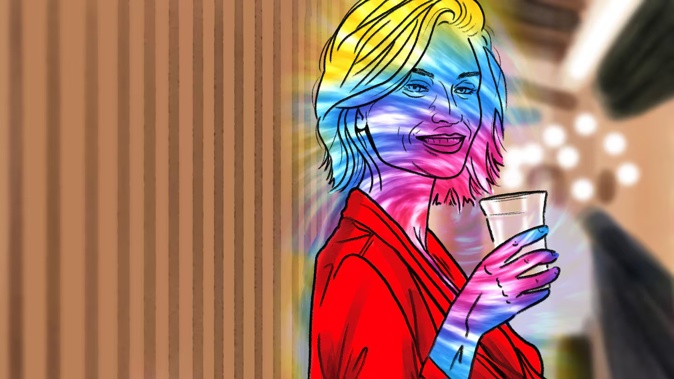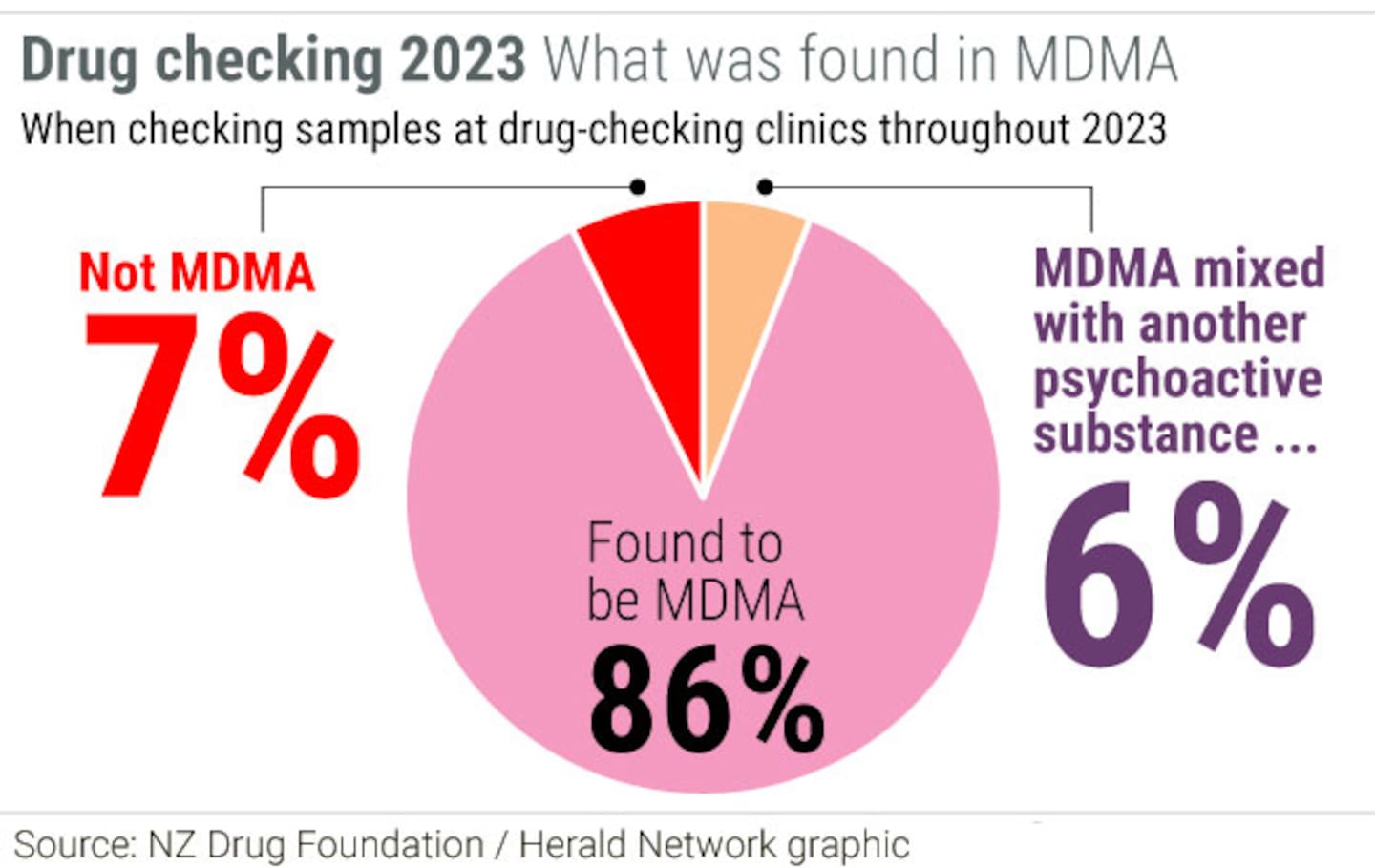
New insights have lifted the lid on Kiwis’ ecstasy use - while raising concerns about how the illicit drug is being paired with binge-boozing.
Use of MDMA, also known as ecstasy, E or Molly, has been on the rise in New Zealand, with about 4% of Kiwis reporting having tried the controlled Class B substance recently.
Today, it’s the country’s second most commonly used illicit drug after cannabis. The amount detected in national wastewater testing in the last quarter of 2023 equated to some 67,000 doses a week.
Until now, however, users’ relationship with ecstasy hasn’t been explored in depth in Aotearoa.
“Understanding consumption behaviours is important as it allows us to find out what is going on ‘out there’ and guide our decision-making regarding where we might make the greatest impact with targeted harm reduction efforts,” Otago University researcher Jai Whelan said.
In a study just published in the journal Drug Science, Policy and Law, Whelan and colleagues surveyed more than 1100 people who’d used MDMA here within the past five years.
Most respondents had encountered it when young – the median age for first use was 19 – with median dose sizes reported as 151 to 200mg, in line with the global average.

MDMA is the country’s second most commonly used illicit drug after cannabis: the amount detected in national wastewater testing in the last quarter of 2023 equated to some 67,000 doses a week. Photo / 123RF
Nearly nine in 10 had used it within the past year – most commonly at house parties – and around a third took it as frequently as every two to three months, with a further 15% using it fortnightly.
Males were likely to use the drug more often than females, and in oral form such as pills, while females mainly reported taking MDMA through snorting, and in lower doses.
When it came to buying the drug, most were turning to friends rather than dealers, through a “social supply” network perceived as less risky.
Overall, Whelan said the findings showed the majority of users had positive experiences with the drug.
“Most people don’t run into problems because of their drug use, and in this case, it appears that many people think their use has positively impacted their lives,” he said.
“This indicates that many users report long-term positive impacts of their use, not just acute euphoric experiences. These results could be important for understanding potential therapeutic uses of MDMA.”
While most reported classic comedown symptoms such as fatigue and depressed mood - and some spoke of internal shock-like experiences called “brain zaps” - many also described a lingering happy and peaceful “afterglow”.
In another finding, more than 20% of users had also taken antidepressants – namely selective serotonin reuptake inhibitors - which were known to blunt the effects of MDMA.

Checking what's in MDMA.
That raised questions about whether those users were taking stronger doses just to get the desired effects, potentially leading to increased harm – something the researchers said warranted more investigation.
The findings further showed many users were taking the drug while consuming alcohol well beyond the threshold of five standard drinks – raising concerns about the compounded risks of dehydration and hyperthermia.
According to coronial data collated by the Drug Foundation, there has been one death in New Zealand since 2013 where MDMA was the only drug present in toxicology - but in the same period, there have been 23 where other substances were in the mix.
“I would encourage people to be mindful about drinking large amounts of alcohol on top of MDMA and whether it is necessary for a good time,” Whelan said.
“Reducing drinking when taking MDMA is unlikely to make it less fun and is likely to reduce your risk of harm whilst you save money.”
Last year, an Otago University study found alcohol caused more widespread harm to New Zealand society than other illegal drugs - followed by methamphetamine, synthetic cannabinoids and tobacco.
Measured against 17 different harm criteria, MDMA came in at 17th of 23 drugs scored for societal harm.
Wastewater testing over 2022/23 showed that per capita, MDMA was used most commonly in the Southern Police district, which included Dunedin – an average 375mg a day per 1000 people.
This year, Otago University students told the Herald of choosing MDMA over alcohol - describing the drug as cheap and helping them party longer – while married couples in their 40s and 50s have told of using ecstasy for date nights.
DRUG SAFETY
Where to get help:
• 0800 METH HELP (0800 6384 4357)
• Alcohol Drug Helpline (Phone 0800 787 797 or text 8681)
• They also have a Māori line on 0800 787 798 and a Pasifika line on 0800 787 799
• How to stay safer if you’re using drugs: The Level
• Where to get your drugs checked: Drug-checking clinics
Jamie Morton is a specialist in science and environmental reporting. He joined the Herald in 2011 and writes about everything from conservation and climate change to natural hazards and new technology.
Take your Radio, Podcasts and Music with you









